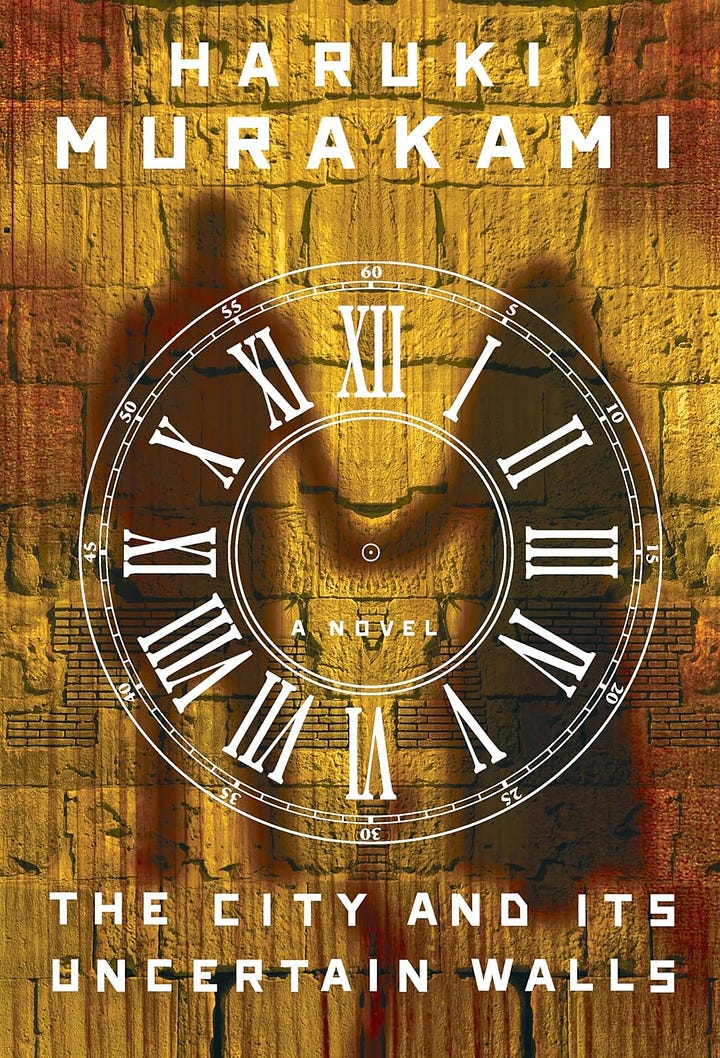Book Review: ‘The City And Its Uncertain Walls'
By Haruki Murakami, Author of IQ84, Kafka on the Shore, and Norwegian Wood
Take this kiss upon the brow!
And, in parting from you now,
This much let me avow —
You are not wrong, who deem
That my days have been a dream.
- Edgar Allen Poe (1849)


Haruki Murakami’s “The City And Its Uncertain Walls” (released today) is at once a story of chaste first love, an extended mediation on the psychology of self, and a valentine to libraries. Murakami’s fourteenth novel (and his first in six years) weaves familiar, gossamer fibers into a weighty tapestry.
The story begins with a “meet cute,” two bookish teens seated adjacent at a ceremony in which they are finalists in an essay contest. Their epistolary courtship involves letters creating a mysterious city behind impregnable walls.
We next meet the main character as an adult at those same city walls, where a Gatekeeper separates him from his shadow. He reunites with his childhood love who hasn’t aged and who has no memory of their prior romance. She becomes his assistant in a mysterious library of dreams.
Instead of books, the stacks in the library were full of countless old dreams. Covered with a thin layer of white dust, none of them seemed to have been touched for ages.
Using a large white cloth, you would carefully wipe away the white dust that had accumulated on an old dream, and then place it on the desk in front of me. I would remove the green-tinted glasses and rest both hands on the surface of the old dream. I’d enclose it in my hands, and, in about five minutes, the old dream would awaken from its deep slumber and its surface would glow faintly.
The story is written in the second person and proceeds in something resembling linear time. The reader follows our unnamed, shadowless protagonist as he leaves the city and its dream library for a traditional life working for a book publisher, only to find the real world disappointing and unsettling (join the club, amiright?)
Yearning for his past life behind the wall, he reunites with his shadow and takes a job at a remote mountain library with “Yellow Submarine Boy,” a teenager who always wears a Yellow Submarine parka. One day, “Yellow Submarine Boy” disappears without explanation.
I will not spoil the ending which somehow brings all of the romantic, emotional, and existential narratives to a satisfying conclusion.
In an interview about “The City And Its Uncertain Walls” Murakami said, “perhaps human beings aren't single entities, but composite beings, constructed of different selves. And maybe it's possible for the real self and the shadow to be interchangeable — a thought that often strikes me as I write my stories.”
Fans of Murakami’s distinct Magical Realism will recognize the familiar themes of solitary men, haunted, supernatural worlds, and longing for childhood love.
“The City And Its Uncertain Walls” is a beautiful story that takes place in this world but it is not of this world. This feels like a good time for a visit.
THE CITY AND ITS UNCERTAIN WALLS | Haruki Murakami | Alfred A. Knopf | 464 pp. | 2024 | $35




